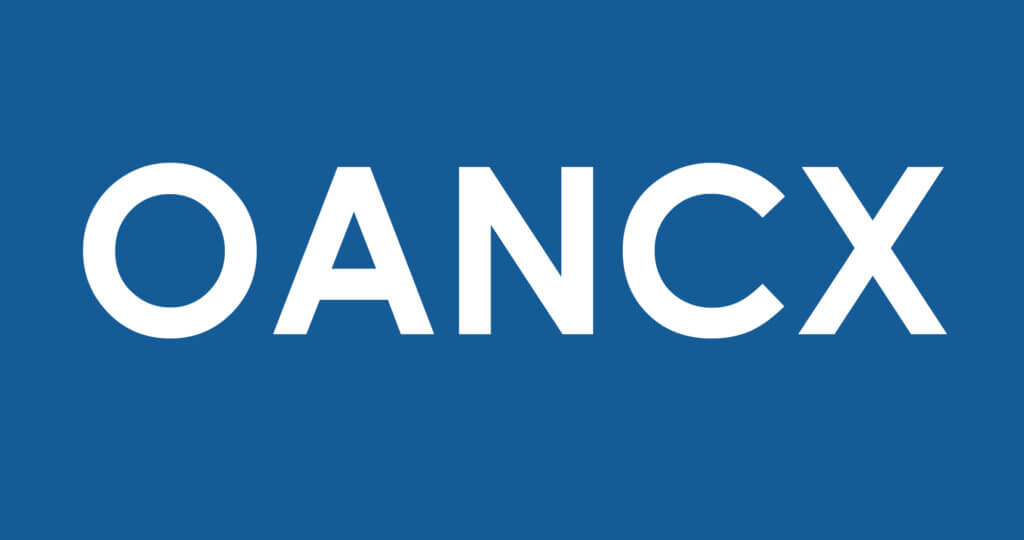Oakmark Bond Fund – Institutional Class
Average Annual Total Returns 12/31/21
Since Inception 06/10/20 3.79%
1-year 1.01%
3-month -0.06%
Gross Expense Ratio: 2.82%
Net Expense Ratio: 0.52%
Expense ratios are based on estimated amounts for the current fiscal year; actual expenses may vary.
The Fund’s Adviser has contractually undertaken to waive and/or reimburse certain fees and expenses so that the total annual operating expenses of each class are limited to 0.54%, 0.52%, and 0.44% of average net assets, respectively. The contractual advisory fee waiver agreement is effective through January 27, 2022.
Past performance is no guarantee of future results. The performance data quoted represents past performance. Current performance may be lower or higher than the performance data quoted. The investment return and principal value vary so that an investor’s shares when redeemed may be worth more or less than the original cost. To obtain the most recent month-end performance data, view it here.
Three Questions to the Fixed Income Desk:
A Perspective for 2022
Calendar-year 2021 certainly was a historic year in fixed income markets, which experienced the highest inflationary numbers in decades, a major central banking pivot and record low real rates—we could go on! In this edition, however, we will avoid recapitulating the details of the past year and instead focus on the one in front of us. To do that, we decided to move away a bit from our traditional topical essay and instead answer some of the top questions we are currently receiving from shareholders. We narrowed the possible list of questions down to three, based on both the frequency in which they were asked and the important insights they might provide as we head into 2022. Here’s a preview of the trio just in case you want to skip ahead:
- Inflation wasn’t transitory: Has the world’s most important central bank lost its credibility?
- Are rate hikes bad for the markets?
- Can real rates stay this low?
1. Has the world’s most important central bank lost its credibility?
One of the most common and important questions we are being asked is whether the Fed has lost its credibility due to its early transitory stance on inflation. Credibility is the lifeblood of Fed policy. So much of what it does in setting policy is through messaging, guidance and other forms of signaling. Actual actions, whether they be changes in bond purchase programs or policy rates, are actually quite infrequent. So to lose credibility is to severely blunt what may be the most productive and most utilized set of tools in the Fed’s toolkit. To start, it’s clear the Fed could have been better with its messaging around inflation. Digging in its heels on “transitory” was short-sighted. The world’s economies were undergoing a brand new experiment, awash in historical levels of monetary and fiscal policy stimulus, while dealing with huge supply and demand fluctuations from the pandemic. In the wisdom of Howard Marks, some things (i.e., future inflation) are simply unknowable. The Fed would have been better off admitting as much from the start until sufficient data on inflation was in. But Jerome and Co. suffering a little trust setback in the short run is much different than losing outright credibility. And the objective indicators that we use to monitor the Fed’s credibility tell a much different story. First and most importantly, inflation expectations have not become unanchored. In fact, despite the highest year-over-year CPI print since 1982 of 6.8%, two-year and five-year inflation expectations actually fell roughly 30 basis points from their November highs and ended the year at 3.2% and 2.9%, respectively. If the Fed is so behind the curve and in the midst of some sort of massive policy error that will lead to runaway inflation, then why is the bond market only reflecting ~3.2% inflation expectations over the next two years?
This leads us to our second point. The market is assigning more credibility to the Fed’s ability (and willingness) to influence inflation than it has in any prior decade. Today’s Fed has more tools, more transparency, more flexibility and a higher readiness to react than any in our history. A great exercise to drive this point home is to read the Fed minutes and press conference transcripts from any of the Fed meetings in 2021 and then compare it to the minutes and telephone conferences in the 1970s. Now do the same exercise and only go back to the early 2000s. The increases in central banking sophistication and innovation over the past 50 years have been parabolic, and the market is pricing this in.
Our final point is that, as we move into 2022, it’s becoming increasingly clear that the durable goods portion of inflation is poised to act as a deflator to overall inflation numbers as supply chains are restored, the rate of aggregate demand growth begins to slow and commodity prices stabilize. This normalization should help reduce overall inflationary gauges, even if rents and labor costs remain elevated. This would in turn re-legitimize the Fed’s more patient and “transitory” initial approach.
2. Is a Fed rate hike cycle bad for markets?
Continued Fed credibility and stabilizing data on inflation should set a solid foundation for the markets next year. This solid foundation will be even more important when the Fed begins raising rates in 2022—for the first time since 2016 and only the third time in the past 20 years. This brings us to the next most popular question we are getting: how will major asset classes react to ebbing monetary accommodation in most G7 economies, most importantly here in the U.S.? A growing crowd of market participants and pundits believe the end of quantitative easing and the subsequent three or four rate hikes the market is currently anticipating will inevitably and significantly disrupt the broader markets. Yet, if we use history as our guide, receding monetary policy—not to be confused with the absolute tightening of financial conditions—has not led to the meaningful re-pricing of market risk. To help illustrate this point, let’s look at major market performance under similar circumstances.
First, equity markets have performed uniformly strongly over both one- and three-year periods following all major hike cycles in history—with only the exception of the one-year forward return in 1994.
Equity Total Return in Rate Hike Cycles1
| 1 Year Forward Equity Return | 3 Year Forward Equity Return (annualized) | |
|---|---|---|
| 1980 | 31.50% | 13.95% |
| 1994 | 1.30% | 19.50% |
| 2004 | 10.90% | 10.12% |
| 2016 | 11.76% | 8.83% |
How about credit markets? As you can see below, following the rate hikes in 1994, 2004 and 2016, credit spreads (a measure of default risk) were incredibly resilient. Only in 1994 were credit spreads wider (meaning lower prices, all else equal) and even then, they were only marginally so. Between June 2004 and June 2007, the Fed raised rates a monumental 4.25% over three years. This coincided with the longest period of low and stable spreads in the past 20 years.
Fixed Income Spreads in Rate Hike Cycles2
| 1 Year Change Credit Spreads | 3 Year Change Credit Spreads | |
|---|---|---|
| 1996 | +5 | -17 |
| 2004 | -10 | -2 |
| 2016 | -74 | -14 |
3. Can rates stay this low next year?
Although historical data indicate that corporate credit spreads and stocks are usually well insulated from rate hikes, we are skeptical that U.S. Treasury bonds will be afforded the same protections in the coming year. Most of the attention on elevated stock prices in the second half of 2021 focused on particular sectors of the equity markets (think tech, SPACs etc.), or emerging asset classes, like digital currencies. To our surprise, not much was said or written about the incredible valuations of U.S. rates—specifically, the persistence of historically low government bond yields in the face of the highest inflation rates experienced in decades. In earlier commentaries, we have written about the possible rationale for seemingly irrational negative real interest rates: excessive monetary policy, elevated savings rates, pensions, a rising safety premium for the baby boomer generation and the global hunt for yield are some of our answers. Ultimately, though, these answers only explain the negative real rate phenomenon in the short run. To explain the past several years, the reality may lie more in a stubborn market psychology: that fixed income buyers and sellers, trained by four decades of positive price reinforcement and lower yields, remain anchored to a disinflationary story, despite the immediate risks of inflation, ongoing shifts to our economy due to the pandemic and a major Fed policy shift.
Framing the market disconnect against the Fed estimates is a worthwhile exercise. Using the Eurodollar market and current inflation expectations, we know the current market’s terminal real rate is somewhere roughly in the -75 basis points to -100 basis points range, the lowest since World War II. Now let’s compare that to the Fed’s current estimate of the neutral real rate of which we can impute from their dot plot guidance and an expectation of 2% long-run inflation. The math works out to be +50 basis points or a full 1.25% to 1.5% above market prices. The large difference begs the question of how long can the market sustain rates that are far below policymakers,’ especially as the Fed begins its hike cycle in the face of ongoing inflationary pressures? Something has to give, and we think the chances are growing that the market will likely have to react (with higher rates) before the Fed does in 2022.
PERFORMANCE AND OUTLOOK
Annual Performance
The Oakmark Bond Fund returned 1.0% in the calendar year 2021 and generated approximately 250 basis points of excess returns versus its benchmark, the Bloomberg Barclays U.S. Aggregate Index. Inception-to-date performance was 3.8% through December 31, 2021, generating excess return against the benchmark of 370 basis points on an annualized basis.
The Fund’s annual outperformance was driven by the portfolio’s overweight allocation to corporate credit, our short curve positioning and security selection. Specifically, during the year, our corporate ownership averaged 53%, compared to the benchmark average of 28%. Credit spread tightening (a lowering of default expectations) across the quality spectrum helped our corporate holdings produce strong relative performance versus other fixed income asset classes. We maintain shorter curve positioning because we continue to believe that rates will increase. Over the year, the duration in the portfolio was a full 1.4 years below the benchmark, averaging 5.1 years, compared to the benchmark’s 6.5-year average duration. The last and most important contributor to the Fund’s outperformance came from security selection, including Chesapeake Energy, Broadcomm and Delta Air Lines. The main detractors for the year included Parsley Energy, Netflix and Tractor Supply.
Quarterly Performance
The Oakmark Bond Fund returned -0.06% for the last quarter (Q4) of the calendar year 2021 and trailed its benchmark, the Bloomberg Barclays U.S. Aggregate Index, by 7 basis points. The Fund’s flat performance in the quarter was driven by a few moving parts. The driver for most of the relative and absolute losses for the quarter was the Fund’s short duration position versus the benchmark as well as our yield curve positioning skewed to the front end. As rates moved lower and the yield curve flattened, both factors acted as headwinds to relative and absolute returns. These detractors were offset by strong security selection and an overweight allocation to corporate credit, preferred shares and leveraged loans. Security selection accounted for ~20 basis points of outperformance during the quarter while positive allocation effect added 22 basis points versus the benchmark. The portfolio’s weighting to corporate credit averaged 49% over the period while the benchmark averaged ~27% over that same time. The Fund’s duration stood at 4.8 years versus the benchmark at 6.8 years at the end of the quarter. Security selection during the period was led by Uber, Weatherford International plc, Chesapeake Energy and Ritchie Bros Holdings. Main detractors for the quarter included Parsley Energy, Federal Farm Credit Bank Funding and Sun Communities.
Outlook and Positioning
Although 2021 was a tough one for returns across most of fixed income, we were proud to be among the few funds in the core plus fixed income category that produced a positive return after fees. The grind is not over, though. Indeed, the challenges that fixed income participants faced last year aren’t all that dissimilar to the challenges that lie ahead for us in 2022. Relatively high historical valuations (low default risk assumptions) across most credit classes, low real U.S. Treasury rates and ongoing inflationary pressures will continue to put a relatively low ceiling on total returns. Price indexes that track durable goods, labor and wages should be closely monitored over the next 12 months. The single largest known risk to the marketplace is if new variants or possibly new fiscal stimulus create sticky and high enough inflation to trigger inflation expectations to fully de-anchor from the Fed’s 2% goal. This could force the Fed to move much more aggressively with hikes. Market participants would then be faced with rapidly rising rates and lowering real growth expectations—a stagflation scenario that would reset valuations lower on all major assets classes across both equities and fixed income. That is not our base case, however. We remain relatively optimistic that major inflation gauges by the second quarter of 2022—driven by the durable goods category—will slowly begin reverting to the long-run mean. This would give central banks more freedom to pace themselves with future hikes. Under this scenario, we expect strong corporate credit fundamentals and lower year-over-year supply expectations will add further technical tailwinds compared to 2021. Positioning for the Fund will continue to gravitate to i) shorter overall Fund duration, ii) a front-end bias on the rate curve and iii) a preference for company-driven opportunities over broader sector or quality calls.
The securities mentioned above comprise the following preliminary percentages of the Oakmark Bond Fund’s total net assets as of 12/31/21: Broadcomm 0.0%, Chesapeake Energy 1.1%, Delta Air Lines 1.7%, Federal Farm Credit Bank Funding 9.2%, Netflix 0.0%, Parsley Energy 1.6%, Ritchie Bros Holdings 1.1%, Sun Communities 1.1%, Tractor Supply 0.0%, Uber 1.1%, Weatherford International plc 0.6%. Portfolio holdings are subject to change without notice and are not intended as recommendations of individual stocks.
Access the full list of holdings for the Oakmark Bond Fund as of the most recent quarter-end.
The Bloomberg Barclays U.S. Aggregate Bond Index is a broad-based benchmark that measures the investment grade, U.S. dollar-denominated, fixed-rate taxable bond market. The index includes Treasurys, government-related and corporate securities, mortgage-backed securities (agency fixed-rate and hybrid ARM pass-throughs), asset-backed securities and commercial mortgage-backed securities (agency and non-agency). This index is unmanaged and investors cannot invest directly in this index.
The Oakmark Bond Fund invests primarily in a diversified portfolio of bonds and other fixed-income securities. These include, but are not limited to, investment grade corporate bonds; U.S. or non-U.S.-government and government-related obligations (such as, U.S. Treasury securities); below investment-grade corporate bonds; agency mortgage backed-securities; commercial mortgage- and asset-backed securities; senior loans (such as, leveraged loans, bank loans, covenant lite loans, and/or floating rate loans); assignments; restricted securities (e.g., Rule 144A securities); and other fixed and floating rate instruments. The Fund may invest up to 20% of its assets in equity securities, such as common stocks and preferred stocks. The Fund may also hold cash or short-term debt securities from time to time and for temporary defensive purposes.
New Fund Risk: The Fund is recently established and has limited operating history. The Fund may not be successful in implementing its investment strategy.
Under normal market conditions, the Fund invests at least 25% of its assets in investment-grade fixed-income securities and may invest up to 35% of its assets in below investment-grade fixed-income securities (commonly known as “high-yield” or “junk bonds”).
Fixed income risks include interest-rate and credit risk. Typically, when interest rates rise, there is a corresponding decline in bond values. Credit risk refers to the possibility that the bond issuer will not be able to make principal and interest payments.
Bond values fluctuate in price so the value of your investment can go down depending on market conditions.
The information, data, analyses, and opinions presented herein (including current investment themes, the portfolio managers’ research and investment process, and portfolio characteristics) are for informational purposes only and represent the investments and views of the portfolio managers and Harris Associates L.P. as of the date written and are subject to change and may change based on market and other conditions and without notice. This content is not a recommendation of or an offer to buy or sell a security and is not warranted to be correct, complete or accurate.
Certain comments herein are based on current expectations and are considered “forward-looking statements”. These forward looking statements reflect assumptions and analyses made by the portfolio managers and Harris Associates L.P. based on their experience and perception of historical trends, current conditions, expected future developments, and other factors they believe are relevant. Actual future results are subject to a number of investment and other risks and may prove to be different from expectations. Readers are cautioned not to place undue reliance on the forward-looking statements.
All information provided is as of 12/31/2021 unless otherwise specified.







